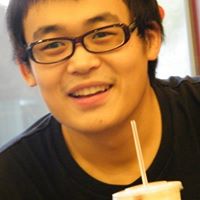Jun Yi Zhou
age ~53
from Newton, MA
- Also known as:
-
- Jun Y Zhou
- Junyi Zhou
- Jun Ding
- Junyi Chou
- Zhou Jy
Jun Zhou Phones & Addresses
- Newton, MA
- Brookline, MA
- Brighton, MA
- Danville, CA
- Broadview, IL
- Fayetteville, AR
- Forest Park, IL
- 1093 Chestnut St APT A, Newton, MA 02464 • (617)9690295
Work
-
Company:Palm, inc.
-
Address:950 W Maude Ave, Sunnyvale, CA 94085
-
Phones:(408)6177000
-
Position:Developer technical support
-
Industries:Radio and Television Broadcasting and Communications Equipment
Specialities
Corporate Law • Foreign Investment • Mergers and Acquisitions • Project Finance
Us Patents
-
Unlocking Vehicle Doors With Facial Recognition
view source -
US Patent:20220410841, Dec 29, 2022
-
Filed:Aug 25, 2022
-
Appl. No.:17/895144
-
Inventors:- San Francisco CA, US
Robin Yang - San Francisco CA, US
Jiajian Zhou - San Francisco CA, US
Jackie Shannon - San Francisco CA, US
Jun Zhou - San Francisco CA, US
Divya Thakur - San Francisco CA, US
Alex Van Dorn - San Francisco CA, US -
International Classification:B60R 25/25
G06Q 10/02
G06V 40/16
G06Q 50/30 -
Abstract:The subject disclosure relates to ways to authenticate a rider/user of an autonomous vehicle (AV) using biometric data, such as facial recognition. A process of the disclosed technology can facilitate the automatic unlocking of an AV by performing steps that include: receiving a dispatch request associated with a user identifier (ID), receiving a recognition model that corresponds with the user ID, and receiving an image stream including images of pedestrian faces. In some aspects, the process can further include steps for: providing the images to the recognition model, and determining if a user represented in the images corresponds with the user ID. Systems and machine-readable media are also provided.
-
System And Method For Calibrating On-Board Vehicle Cameras
view source -
US Patent:20200034988, Jan 30, 2020
-
Filed:Jul 29, 2019
-
Appl. No.:16/524628
-
Inventors:- Cayman Islands, KY
Jun Zhou - Mountain View CA, US -
International Classification:G06T 7/80
G06T 7/70
H04N 17/00
H04N 5/247
G01S 17/02
B60R 11/04 -
Abstract:Provided herein are methods for calibrating a camera. The method may include capturing an image that includes at least a traffic sign. The location of the traffic sign using the image may then be determined, which may include taking as input the location and direction of the vehicle and the location and the direction of the camera relative to the vehicle. The method may also include obtaining an actual location of the traffic sign. The camera may be determined to require recalibration if the determined location is different from the actual location.
-
Compositions And Methods For Identification, Assessment, Prevention, And Treatment Of Melanoma Using Pd-L1 Isoforms
view source -
US Patent:20190375818, Dec 12, 2019
-
Filed:Mar 27, 2019
-
Appl. No.:16/365978
-
Inventors:- Boston MA, US
Jun Zhou - Waltham MA, US
Gordon J. Freeman - Brookline MA, US
Jingjing Li - Lexington MA, US
Xinqi Wu - Chestnut Hill MA, US -
International Classification:C07K 14/705
C12Q 1/6886
C07K 16/28
A61K 45/06
A61K 39/395
A61K 38/17
A61K 9/00
G01N 33/574
G01N 33/50
C07K 16/30 -
Abstract:The present invention relates to compositions and methods for identifying, assessing, preventing, and treating melanoma. A variety of PD-L1 isoform biomarkers are provided, wherein alterations in the copy number of one or more of the biomarkers and/or alterations in the amount, structure, and/or activity of one or more of the biomarkers is associated with melanoma status.
-
Duty Cycle Optimization In Single-Molecule Detection
view source -
US Patent:20190210016, Jul 11, 2019
-
Filed:Jan 3, 2019
-
Appl. No.:16/238986
-
Inventors:- WOBURN MA, US
Jeff KROGMEIER - Winchester MA, US
Andrew GOLDEN - Boston MA, US
Samrudhi SHARMA - Billerica MA, US
Laurent MENARD - Raleigh NC, US
Andrew WATSON - Bedford MA, US
Oscar MCCRATE - Detroit MI, US
Jun ZHOU - Belmont MA, US
Rachel ROWELL - Salem MA, US -
International Classification:B01L 3/00
C12Q 1/68
G01N 27/447 -
Abstract:A fluidic chip for detecting an analyte is provided, which comprises (a) at least one device comprising (i) a fluid inlet and (ii) at least one fluid transport channel that passes through a detection region, wherein (1) the at least one fluid transport channel has varying cross-sectional area as a function of position along the channel length and/or (2) the device comprises two or more fluid transport channels configured with two or more different cross-sectional areas; and (b) at least one fluid outlet, wherein the device provides for transport of single molecules across the detection region at a desired duty cycle by (1) allowing for detection of an analyte at a different position along the channel length based on the desired cross-sectional area and/or (2) allowing for detection of an analyte in a specific channel configured with the desired cross-sectional area. This application also provides for method of optimizing duty cycle using fluidic chips.
-
Offline Combination Of Convolutional/Deconvolutional And Batch-Norm Layers Of Convolutional Neural Network Models For Autonomous Driving Vehicles
view source -
US Patent:20180253647, Sep 6, 2018
-
Filed:Mar 6, 2017
-
Appl. No.:15/451345
-
Inventors:- Sunnyvale CA, US
XIAO BO - Sunnyvale CA, US
JUN ZHOU - Sunnyvale CA, US
WEIDE ZHANG - Santa Clara CA, US
TONY HAN - Sunnyvale CA, US -
International Classification:G06N 3/08
G06N 3/04
G06F 17/16 -
Abstract:In one embodiment, a system to accelerate batch-normalized convolutional neural network (CNN) models is disclosed. The system extracts a plurality of first groups of layers from a first CNN model, each group of the first groups having a first convolutional layer and a first batch-norm layer. For each group of the plurality of first groups, the system calculates a first scale vector and a first shift vector based on the first batch-norm layer, and generates a second convolutional layer representing the corresponding group of the plurality of first groups based on the first convolutional layer and the first scale and the first shift vectors. The system generates an accelerated CNN model based on the second convolutional layer corresponding to the plurality of the first groups, such that the accelerated CNN model is utilized subsequently to classify an object perceived by an autonomous driving vehicle (ADV).
-
Apparatus, Systems And Methods For Container Based Service Deployment
view source -
US Patent:20170257432, Sep 7, 2017
-
Filed:May 22, 2017
-
Appl. No.:15/601993
-
Inventors:- San Jose CA, US
VENKAT NARAYAN SRINIVASAN - Fremont CA, US
JUN ZHOU - Mountain View CA, US -
International Classification:H04L 29/08
G06F 9/50 -
Abstract:Embodiments disclosed facilitate distributed orchestration and deployment of a single instance of a distributed computing application over a plurality of clouds and container clusters, including container clusters provided through a Container as a Service (CaaS) offering. In some embodiments, system and pattern constructs associated with a hybrid distributed multi-tier application may be used to obtain an infrastructure independent representation of the distributed multi-tier application. The infrastructure independent representation may comprise a representation of an underlying pattern of resource utilization of the application. Further, the underlying pattern of resource utilization of the application may be neither cloud specific nor container cluster specific. In some embodiments, a single instance of the hybrid distributed multi-tier application may be deployed on a plurality of cloud infrastructures and on at least one container cluster, based, in part, on the cloud-infrastructure independent representation of the application.
-
Angiopoiten-2 Biomarkers Predictive Of Anti-Immune Checkpoint Response
view source -
US Patent:20170248603, Aug 31, 2017
-
Filed:Oct 5, 2015
-
Appl. No.:15/516774
-
Inventors:- Boston MA, US
Jun Zhou - Waltham MA, US
Xinqi Wu - Chestnut Hill MA, US -
Assignee:Dana-Farber Cancer Institute, Inc. - Boston MA
-
International Classification:G01N 33/574
C12Q 1/68
G01N 33/50 -
Abstract:The present invention is based on the identification of novel biomarkers predictive of responsiveness to anti-immune checkpoint therapies.
-
Compositions And Methods For Identification, Assessment, Prevention, And Treatment Of Melanoma Using Pd-L1 Isoforms
view source -
US Patent:20160340407, Nov 24, 2016
-
Filed:Jan 14, 2015
-
Appl. No.:15/110808
-
Inventors:- Boston MA, US
Jun Zhou - Waltham MA, US
Gordon J. Freeman - Brookline MA, US
Jingjing Li - Lexington MA, US
Xinqi Wu - Chestnut Hill MA, US -
Assignee:Dana-Farber Camcer Institute, Inc. - Boston MA
-
International Classification:C07K 14/705
A61K 9/00
C07K 16/28
G01N 33/574
C07K 16/30
A61K 38/17
G01N 33/50
C12Q 1/68
A61K 45/06
A61K 39/395 -
Abstract:The present invention relates to compositions and methods for identifying, assessing, preventing, and treating melanoma, A variety of PD-L1 isoform biomarkers are provided, wherein alterations in the copy number of one or more of the biomarkers and/or alterations in the amount, structure, and/or activity of one or more of the biomarkers is associated with melanoma status.
Resumes

Jun Zhou
view source
Jun Zhou
view source
Jun Zhou
view source
Jun Zhou
view source
Jun Zhou
view source
Jun Zhou
view source
Senior Manager
view sourceWork:
Mininglamp
Senior Manager
Senior Manager

Jun Zhou
view sourceLawyers & Attorneys

Jun Zhou - Lawyer
view sourceOffice:
Jun He Law Offices
Specialties:
Corporate Law
Foreign Investment
Mergers and Acquisitions
Project Finance
Foreign Investment
Mergers and Acquisitions
Project Finance
ISLN:
918407366
Admitted:
1992
Law School:
Beijing University Law School, LL.B., 1991
Name / Title
Company / Classification
Phones & Addresses
Developer Technical Support
Palm, Inc.
Radio and Television Broadcasting and Communi...
Radio and Television Broadcasting and Communi...
950 W Maude Ave, Sunnyvale, CA 94085
Owner
Farmers Insurance Group
Insurance Agents, Brokers, and Service
Insurance Agents, Brokers, and Service
3354 147Th St, Crestwood, IL 60445
President
Farmers Insurance Group
Insurance Agents, Brokers, and Service
Insurance Agents, Brokers, and Service
4104 S Archer Ave, Chicago, IL 60632
Website: farmers.com
Website: farmers.com
Manager
JUN Zhou
Nonclassifiable Establishments
Nonclassifiable Establishments
4104 S Archer Ave Fl 2, Chicago, IL 60632
Citywide Real Estate
Real Estate Agents and Managers
Real Estate Agents and Managers
2153 S China Pl Ste B, Chicago, IL 60616
Director
Smart Forwarding Agency Inc
President, Principal
JIAYI INC
Electronic Shopping
Electronic Shopping
251 Harvard St SUITE 8, Brookline, MA 02446
63 Parkman St, Brookline, MA 02446
63 Parkman St, Brookline, MA 02446
President
UNU Electronics Inc.
Consumer Electronics · Ret Misc Merchandise · Whol Electronic Parts/Equipment · Electronic Repair
Consumer Electronics · Ret Misc Merchandise · Whol Electronic Parts/Equipment · Electronic Repair
Union City, CA 94587
29410 Un City Blvd SUITE A, Union City, CA 94587
24700 Msn Blvd, Hayward, CA 94544
(510)4886227, (510)3639478
29410 Un City Blvd SUITE A, Union City, CA 94587
24700 Msn Blvd, Hayward, CA 94544
(510)4886227, (510)3639478
Plaxo

zhou jun
view sourceBank of China
Flickr

Zhou Jun Zhou Jun
view source
Jun de Zhou
view source
Werner Jun Zhou
view source
Teresa Li Jun Zhou
view source
Jun Zhou
view source
Edis Jun Zhou
view source
Jun Qiang Zhou
view source
Jun Zhou
view sourceMyspace
Googleplus

Jun Zhou
Work:
Tencent
Education:
Huazhong Agricultural University,China - Computer Science and Technology
Tagline:
Over the Great Wall

Jun Zhou
Relationship:
Single
About:
独自生活并享受一个人...
Bragging Rights:
未婚

Jun Zhou
Education:
Università degli Studi di Padova - Ingegneria dell'Energia

Jun Zhou

Jun Zhou
Work:
Jack

Jun Zhou

Jun Zhou

Jun Zhou
Youtube
Get Report for Jun Yi Zhou from Newton, MA, age ~53













